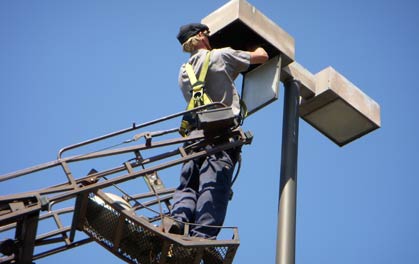Maintenance
Typically, when people think about LEDs they think about energy savings, but maintenance savings (and gains in productivity)
are equally important when it comes to determining the financial value of investing in LED lighting.
Maintenance Savings
Businesses and municipalities throughout the country are adopting energy efficient lighting systems because they improve service levels while reducing costs. Maintenance cost savings are a significant benefit of adopting energy efficient technology.
Lower maintenance costs come from the exceptionally long life of LED lighting. Light emitting diodes last 50,000 to 300,000 hours, and unlike conventional methods, they don’t need ballasts nor strikers. The result is dramatically lower maintenance costs.
LED maintenance savings stem from:
1) Cost of time to report light outage
2) Cost of material for repairing non functional lights
3) Labor costs for the replacement of bulbs/ballast/ striker etc.
The most significant maintenance and energy savings are realized from lights used in stairwells, emergency lights and any lights that remain switched on 24 hours a day. The maintenance savings also are substantial for exterior lights that need lifts or scaffolding for replacement. In these applications payback is achieved quickly.
Proper Lighting and Safety
For safety and security applications (like slippery floors in food processing and exterior lighting) light failure can have unacceptable consequences. In these areas,
the long lifespan of LED technology makes it the better choice.
Why Do LEDs Last So Much Longer?
LED lights have a light emitting diode, driver electronics, thermal management and optics. None of those components are fragile like bulb filaments nor are they sealed
under high pressure as in the traditional high wattage bulbs. Lights are only as good as the life of their components and LEDs components are made to last.